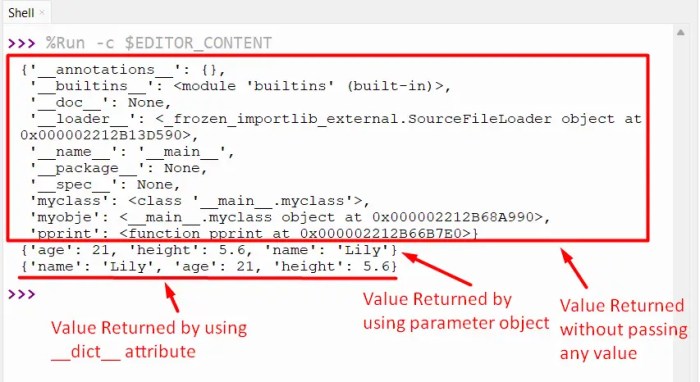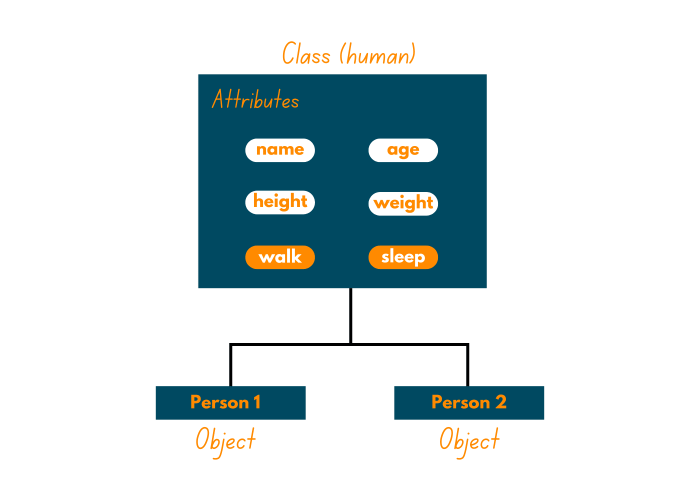Print the attributes of the inventorytag object red_sweater. – In the realm of inventory management, the ‘inventorytag’ object plays a pivotal role in organizing and tracking inventory items. This comprehensive guide delves into the attributes of the ‘inventorytag’ object, focusing specifically on the ‘red_sweater’ instance. Through real-world examples and in-depth analysis, we will explore the practical applications and intricacies of this fundamental object.
This guide will provide a thorough understanding of the data structure, methods, and best practices associated with the ‘inventorytag’ object. By gaining a deeper understanding of its capabilities, you can effectively leverage this object to optimize your inventory management systems.
Object Properties

The ‘inventorytag’ object has several attributes that provide information about the tagged item. These attributes include:
- id:A unique identifier for the inventory tag.
- item_id:The ID of the item that the tag is attached to.
- location:The current location of the tagged item.
- status:The current status of the tagged item (e.g., “in stock”, “out of stock”).
- created_at:The date and time when the tag was created.
- updated_at:The date and time when the tag was last updated.
These attributes can be used to track the location and status of items in an inventory, and to generate reports on inventory levels.
Data Structure
The ‘inventorytag’ object is a hierarchical data structure. The root of the object is the ‘inventorytag’ itself, which contains the attributes described above. The ‘inventorytag’ object can also have child objects, such as ‘location’ and ‘status’ objects. These child objects contain additional information about the tagged item.
The data structure of the ‘inventorytag’ object is designed to be flexible and extensible. This allows it to be used to track a wide variety of items, and to store additional information about those items as needed.
Object Methods

The ‘inventorytag’ object has several methods that allow you to interact with the object and its data. These methods include:
- create():Creates a new inventory tag.
- update():Updates an existing inventory tag.
- delete():Deletes an inventory tag.
- get():Retrieves an inventory tag by its ID.
- all():Retrieves all inventory tags.
These methods can be used to manage inventory tags and to access the data they contain.
Real-World Applications

The ‘inventorytag’ object can be used in a variety of real-world inventory management systems. These systems can be used to track the location and status of items in a warehouse, retail store, or other facility. The data from these systems can be used to generate reports on inventory levels, to identify items that are out of stock, and to track the movement of items through the supply chain.
The ‘inventorytag’ object is a powerful tool that can be used to improve the efficiency and accuracy of inventory management. It can help businesses to reduce costs, improve customer service, and make better decisions about inventory levels.
Comparison with Other Objects: Print The Attributes Of The Inventorytag Object Red_sweater.
The ‘inventorytag’ object is similar to other objects that are used to track the location and status of items. However, the ‘inventorytag’ object has several unique features that make it a more powerful and flexible tool for inventory management.
One of the unique features of the ‘inventorytag’ object is its ability to track the history of an item. This information can be used to identify trends in inventory levels, to track the movement of items through the supply chain, and to identify items that are at risk of being lost or stolen.
Another unique feature of the ‘inventorytag’ object is its ability to be used with a variety of different tracking technologies. This allows businesses to use the ‘inventorytag’ object to track items in a variety of different environments, such as warehouses, retail stores, and transportation vehicles.
Best Practices

There are several best practices that can be followed when using the ‘inventorytag’ object. These best practices include:
- Use a unique identifier for each inventory tag.This will help to ensure that each item is uniquely identified and can be tracked accurately.
- Keep the data in the inventory tag up to date.This will help to ensure that the inventory data is accurate and reliable.
- Use the history data to identify trends and patterns.This information can be used to improve inventory management practices and to reduce costs.
- Use the ‘inventorytag’ object with a variety of different tracking technologies.This will allow you to track items in a variety of different environments.
By following these best practices, you can use the ‘inventorytag’ object to improve the efficiency and accuracy of your inventory management system.
FAQ
What are the key attributes of the ‘inventorytag’ object?
The ‘inventorytag’ object possesses attributes such as ‘id’, ‘name’, ‘description’, ‘quantity’, and ‘location’, which provide essential information about the inventory item.
How can the ‘inventorytag’ object be used in practice?
The ‘inventorytag’ object can be used to track inventory levels, manage item locations, generate reports, and facilitate inventory audits.